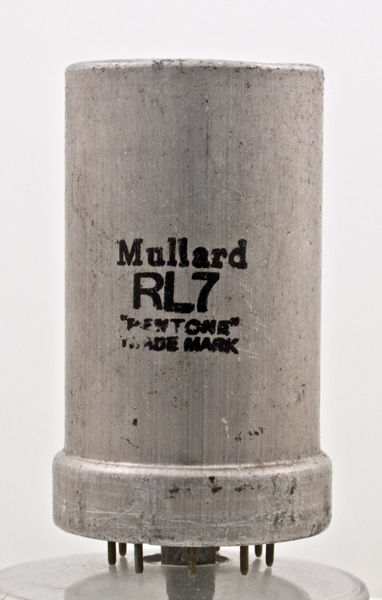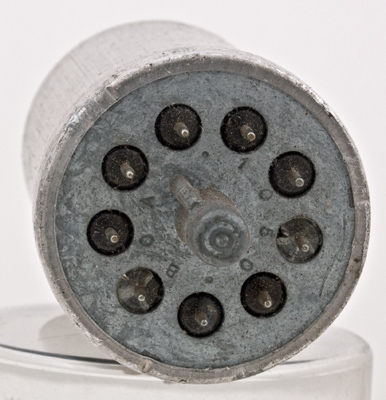|
RL7Sensibly equivalent¶ to:See also:
|
|
|

|
The RL7 is a VHF high-slope pentode and has a sharp cut-off. The cathode is brought out to several pins to provide a low inductance path, part way to a ring connection as found in co-axial valves. A design feature of the RL7 is aligned grids that provide conditions to reduce partition noise.The RL7 was developed from the EF50 during WWII and was capable of operation up to 200 MHz. Although released originally as the RL7 and CV1136 it was later renamed as the EF54 and this designation complied with the Philips/Mullard naming convention. The mystery is why it was originally named the RL7.
The all glass construction is covered with an aluminium screening can in the same fashion as the EF50 et al. In later B9G valves one of the glass surrounds holding the pins would be shaped to provide a positive identification as to the direction that the spigot should point and thus identify the pin numbers correctly.The wide glass tube envelope is 33 mm in diameter and, excluding the B9G base pins, is 60 mm tall.References: Data-sheet & 1043. Type RL7 was first introduced in 1941. See also 1941 adverts. |
Pin Connections
| 1 | 2 | 3 | 4 | 5 | 6 | 7 | 8 | 9 |  h | a | g2 | k | k | g1 | k | k | h |
|
|
Absolute Maximum Operating Conditions¶
| Vh | Ah | Va | Vs | Vg | mAa | mAs | ra | gm | 
| 6.3 | 0.3 | 250 | 250 | -1.7 | 10 | 1.45 | 0.5m | 7.7 |
|
Updated April 04, 2015.
|
|